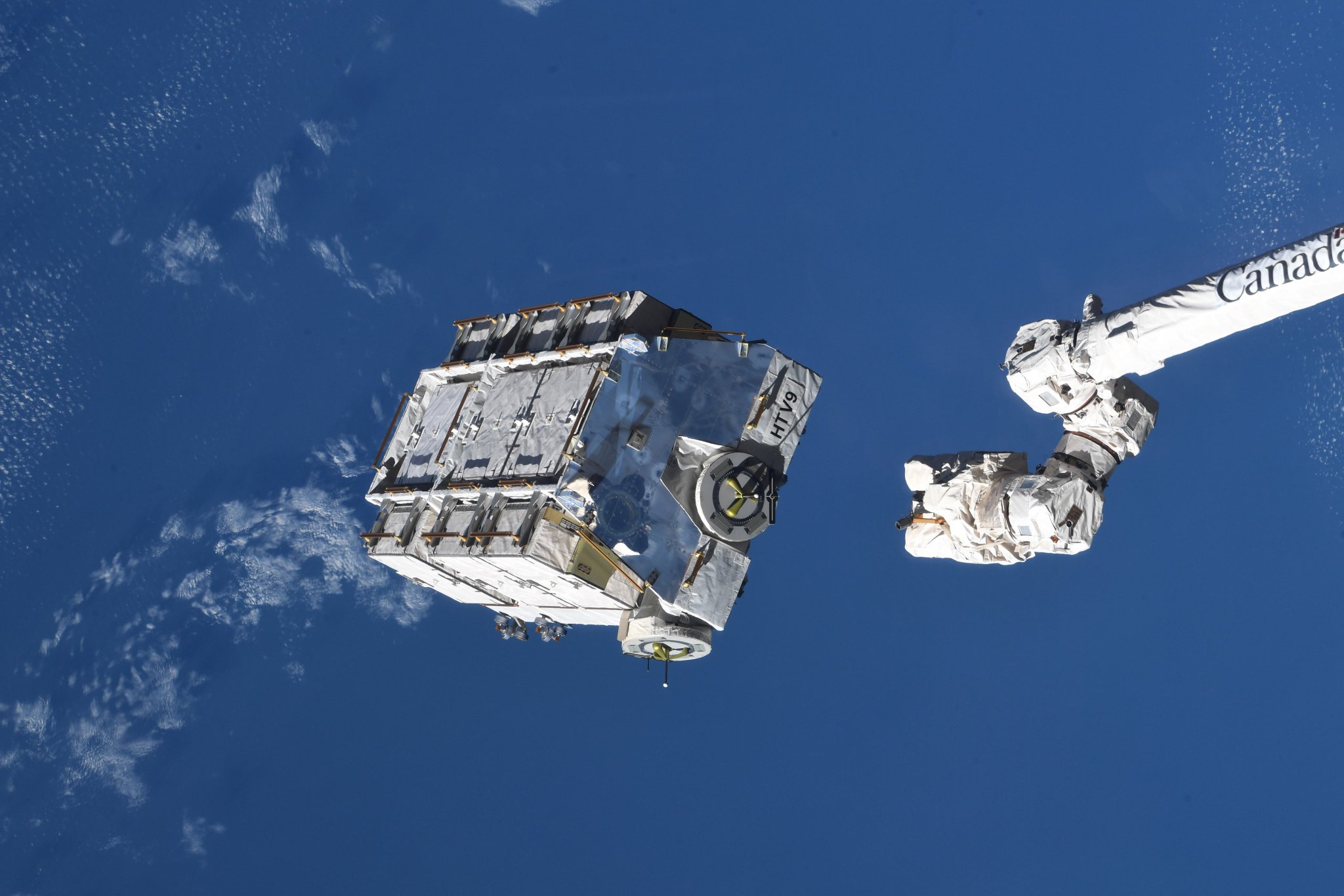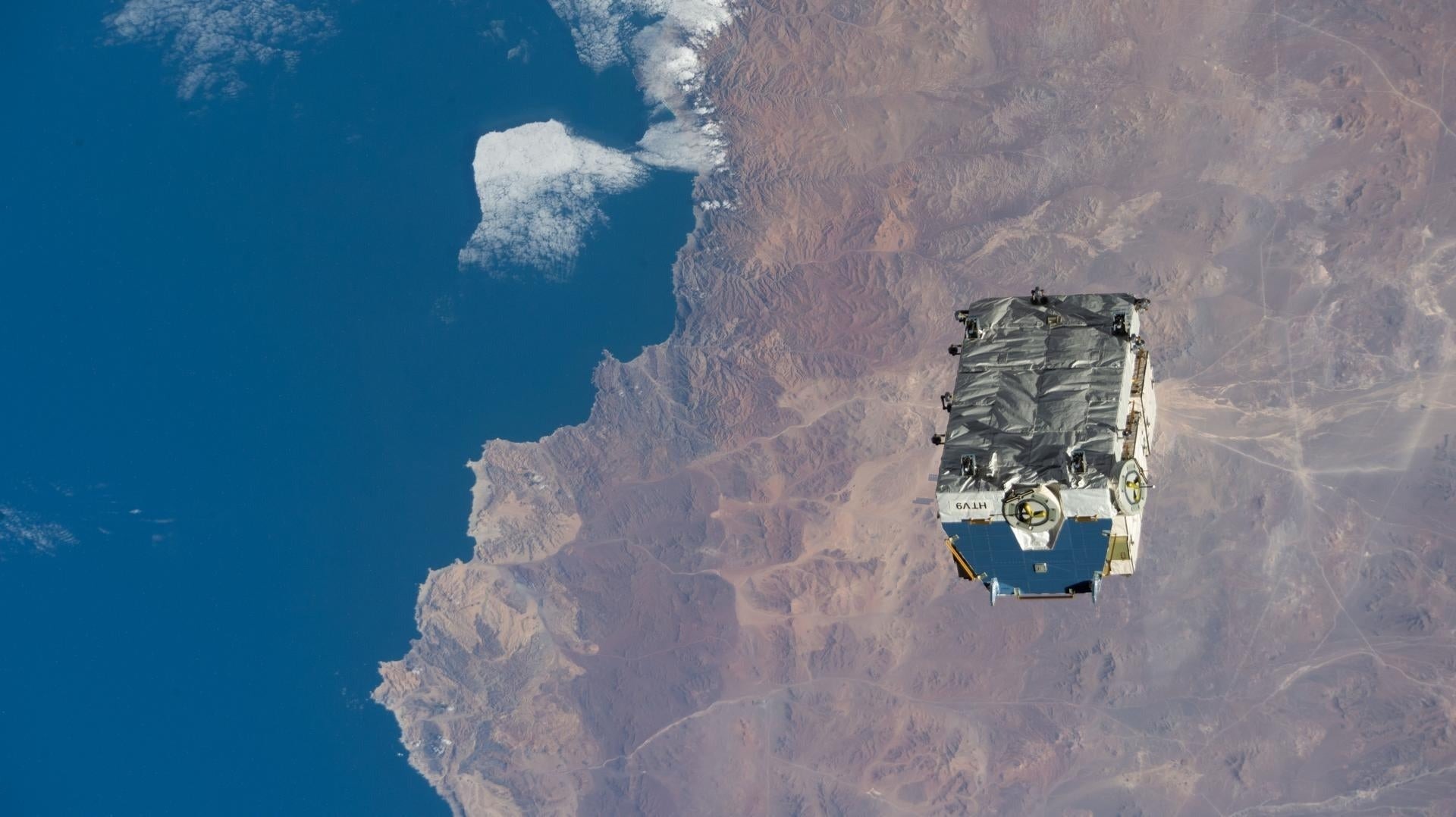A 2.9-ton cargo pallet, used for a critical battery upgrade mission on the International Space Station (ISS), is at the finish line of its space journey. It is expected that in the coming days, the spent cargo will enter the lower layers of the Earth’s atmosphere, where it will be destroyed. This cargo was “ejected” from the ISS in March 2021 using the Canadarm2 arm. Now, after three years of slow falling from a height of 426 km, the cargo is finally ready to burn.

Harvard-Smithsonian astronomer Jonathan McDowell notes that the pallet “will not burn completely” upon entering the atmosphere. About half a ton of fragments can fall to the surface of the Earth. Re-entry into the atmosphere is expected on March 8, but the exact time is unknown, as well as the place of the fall.
“The pallet was the largest object—mass-wise—ever jettisoned from the International Space Station,” said NASA spokeswoman Leah Cheshier. Its mass of 2.9 tons exceeds the mass of the ammonia tank of the maintenance system. It was thrown in a similar way in 2007.
Reentry of the EP-9 battery pallet jettisoned from ISS in 2021 is currently predicted (by Space Force) between 1230 UTC Mar 8 and 0830 UTC Mar 9. It will not totally burn up on reentry – about half a tonne of fragments will likely hit the Earth's surface.
— Jonathan McDowell (@planet4589) March 7, 2024
The fall of the pallet with spent cargo began after the modernization of the ISS power system in May 2020. A Japanese cargo spacecraft delivered a pallet with equipment to replace the old 48 nickel-hydrogen batteries with new 24 lithium-ion batteries. The batteries store the energy collected by the station’s solar arrays. It was part of a large-scale project that culminated in the spacewalk of astronauts Mike Hopkins and Victor Glover on February 1, 2021.

However, the uncontrolled disposal of the pallet was not included in the original plan. Roscosmos prevented this after the unsuccessful launch of the Soyuz rocket in 2018, which forced NASA astronaut Nick Hague and cosmonaut Alexey Ovchinin to make an emergency landing in the Kazakh steppe. The incident disrupted the schedules of spacewalks to upgrade batteries, which led to a backlog in the disposal of used equipment. Usually, old batteries are placed in a disposable spacecraft and dropped from the ISS in a controlled manner so that they burn up when entering the lower atmosphere. Since the spacecraft never arrived, it was decided to throw the pallet on its own.
March 8 marks the end of this story. Provided that the falling debris does not injure anyone or damage property. Such situations remind us of the challenges and complexities inherent in managing and adapting space missions.
Earlier, we reported on how an astronaut from Russia threw garbage from the ISS during a spacewalk.
According to gizmodo.com
Follow us on Twitter to get the most interesting space news in time
https://twitter.comne/ust_magazine


